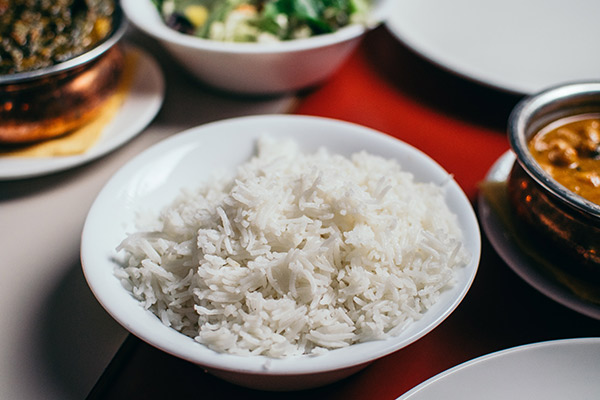PEACE & LOVE: Say Goodbye to RICE for Your Soft-Tissue Injury
PEACE & LOVE
A recent editorial piece in the British Journal of Sports Medicine introduced a new acronym(s) for the care of acute injuries and their subsequent management. Here I would like to outline the changes that have taken place over the years in the understanding of basic soft-tissue injury management.
RICE was the first acronym brought about to manage soft-tissue injury. This is nice and simple. Dr Gabe Mirkin first introduced this in 1978. Subsequently RICE has been the mainstay of first aid courses in soft tissue injury.
RICE
R = Rest: resting for 24-48 hours was recommended before starting modified activity.
I = Ice: Ice is excellent at reducing the inflammatory response and pain associated with heat generated by increased blood flow and/or blood loss.
C = Compression: Compression aims to reduce swelling that results from the inflammatory process. Although some swelling is unavoidable, too much swelling results in significant loss of function, undue pain and eventual slowing of blood flow through vessel restriction.
E = Elevation: Elevation aims to reduce swelling by increasing venous return of blood to the circulation. This will result in less edema which reduces pain and/or swelling.
Then around 2006-2007 studies on the management of acute ankle sprains introduced P to RICE.
PRICE
P = Protection: Protecting the injured area from further damage is crucial to the healing process
POLICE
2012 saw POLICE getting involved! OL replaced R (rest).
P = protection
OL = optimal loading: load the injured tissue as required for the stage of injury.
I = ice
C = compression
E = elevation
Bye-bye RICE
Then in 2014, Dr Gabe Mirkin retracted his support for his R.I.C.E protocol for soft-tissue injury! He wrote,
“Coaches have used my ‘RICE’ guideline for decades, but now it appears that both ice and complete rest may delay healing, instead of helping.”
He surmised from scientific evidence that cooling the injured soft tissue causes vasoconstriction (tightening of blood vessels). This means that healing cells cannot reach the injured tissue thereby slowing the healing response. Not speeding it up.
This lead to the authors within the British Journal of Sports Medicine reviewing recent literature. So they proceeded to come up with new acronyms for the management of soft tissue injuries:
PEACE & LOVE for Soft-Tissue Injury
The authors felt that previous acronyms focussed only on acute management. Thus ignoring sub-acute and chronic stages of tissue healing. These new acronyms cover rehabilitation from immediate care of injury (PEACE), to on-going management (LOVE)
Immediately after injury, do no harm and let PEACE guide your approach.
P for protect
Unload or restrict movement for 1–3 days to minimise bleeding, prevent distension of injured fibres and reduce the risk of aggravating the injury. Rest should be minimised as prolonged rest can compromise tissue strength and quality. Pain signals should guide the cessation of protection.
E for elevate
Elevate the limb higher than the heart to promote fluid flow out of tissues. Despite weak evidence supporting its use, elevation shows a low risk-to-benefit ratio.
A for avoid anti-inflammatory modalities
The various phases of inflammation help repair damaged soft tissues. Thus, inhibiting inflammation using medications may negatively affect long-term tissue healing, especially when higher dosages are used. Hence standard of care for soft-tissue injuries should not include anti-inflammatory medications.
The use of ice/cooling is questioned*. Despite widespread use among clinicians and the population, there is no high-quality evidence on the efficacy of ice for treating soft-tissue injuries. Even if mostly pain-relieving, ice could potentially disrupt inflammation, new blood vessel formation, delay healing cell infiltration as well as increase immature muscle fibres. This may lead to impaired tissue repair and redundant collagen synthesis.
*I have found in real-world practice that ice does have it place. Take for example an acute ankle sprain. Having ruled out bone fracture (through clinical rules or imaging), or injury that shouldn’t have weight put through it, some can still not weight-bear on an injured ankle. Weight-bearing as able is a load that is known to improve initial outcome. Therefore the pain-reducing effect of icing can help to get the ankle weight-bearing, improving function and long-term outcomes.
C for compress
External mechanical pressure using taping or bandages helps limit joint swelling and tissue bleeding. Despite conflicting studies, compression after an ankle sprain seems to reduce swelling and improve quality of life.
E for educate
Education on the many benefits of an active approach to recovery is key. Passive modalities, such as electrotherapy, manual therapy or acupuncture, early after injury have insignificant effects on pain and function compared with an active approach, and may even be counterproductive in the long term. Hence better education on the condition and load management will help avoid overtreatment. This in turn reduces the likelihood of unnecessary injections or surgery, and supports a reduction in the cost of healthcare (eg, due to disability compensation associated with low back pain). In an era of hi-tech therapeutic options, it is strongly advocated for setting realistic expectations with patients about recovery times instead of chasing the ‘magic cure’ approach.
So after the first days have passed, soft tissues need LOVE.
L for load
An active approach with movement and exercise benefits most patients with musculoskeletal injury. Mechanical stress should be added early with normal activities resumed as soon as symptoms allow. Optimal loading without exacerbating pain promotes repair, remodelling and builds tissue tolerance and the capacity of tendons, muscles and ligaments.
O for optimism
Optimistic patient expectations result in better outcomes and prognosis. Psychological factors such as catastrophising, depression and fear can represent barriers to recovery. The variation in symptoms following an ankle sprain are thought to be more attributed to beliefs and emotions than the degree of structural injury.
V for vascularisation
Cardiovascular activity represents a cornerstone in the management of musculoskeletal injuries. Therefore to boost motivation and increase blood flow to the injured structures pain-free aerobic exercise should be started a few days after injury – more research is needed on how much to do. Early movement and aerobic exercise improve physical function, supporting return to work and reduce the need for pain medication in individuals with injury.
E for exercise
Following cardiovascular activity there is a strong level of evidence supporting the use of rehabilitative exercise for the treatment of ankle sprains and for reducing the prevalence of recurrent injuries. Exercises help to restore mobility, strength and balance control early after injury. Pain is a guide for exercise progressions, and should be avoided. This will help ensure optimal repair in the subacute phase.
So that is where we are at currently in regards to soft-tissue injury management: PEACE & LOVE. This takes into account that proper management involves not just short-term relief, but aims for positive long-term outcomes.
As always, it is important to ensure that as a physio I am striving to treat the person with the injury, rather than the injury of the person.
I look forward to the next release of acronyms in regards to soft tissue injury management, and how they can better PEACE & LOVE!
References:
Bleakley CM, Glasgow P, MacAuley DC. PRICE needs updating, should we call the POLICE?
British Journal of Sports Medicine 2012;46:220-221.
https://www.physio-pedia.com/Peace_and_Love_Principle
Bleakley, C. M., O’Connor, S., Tully, M. A., Rocke, L. G., Macauley, D. C., & McDonough, S. M. (2007). The PRICE study (Protection Rest Ice Compression Elevation): design of a randomised controlled trial comparing standard versus cryokinetic ice applications in the management of acute ankle sprain [ISRCTN13903946]. BMC musculoskeletal disorders, 8, 125. https://doi.org/10.1186/1471-2474-8-125
Dubois B, Esculier J. Soft-tissue injuries simply need PEACE and LOVE. British Journal of Sports Medicine 2020;54:72-73.


